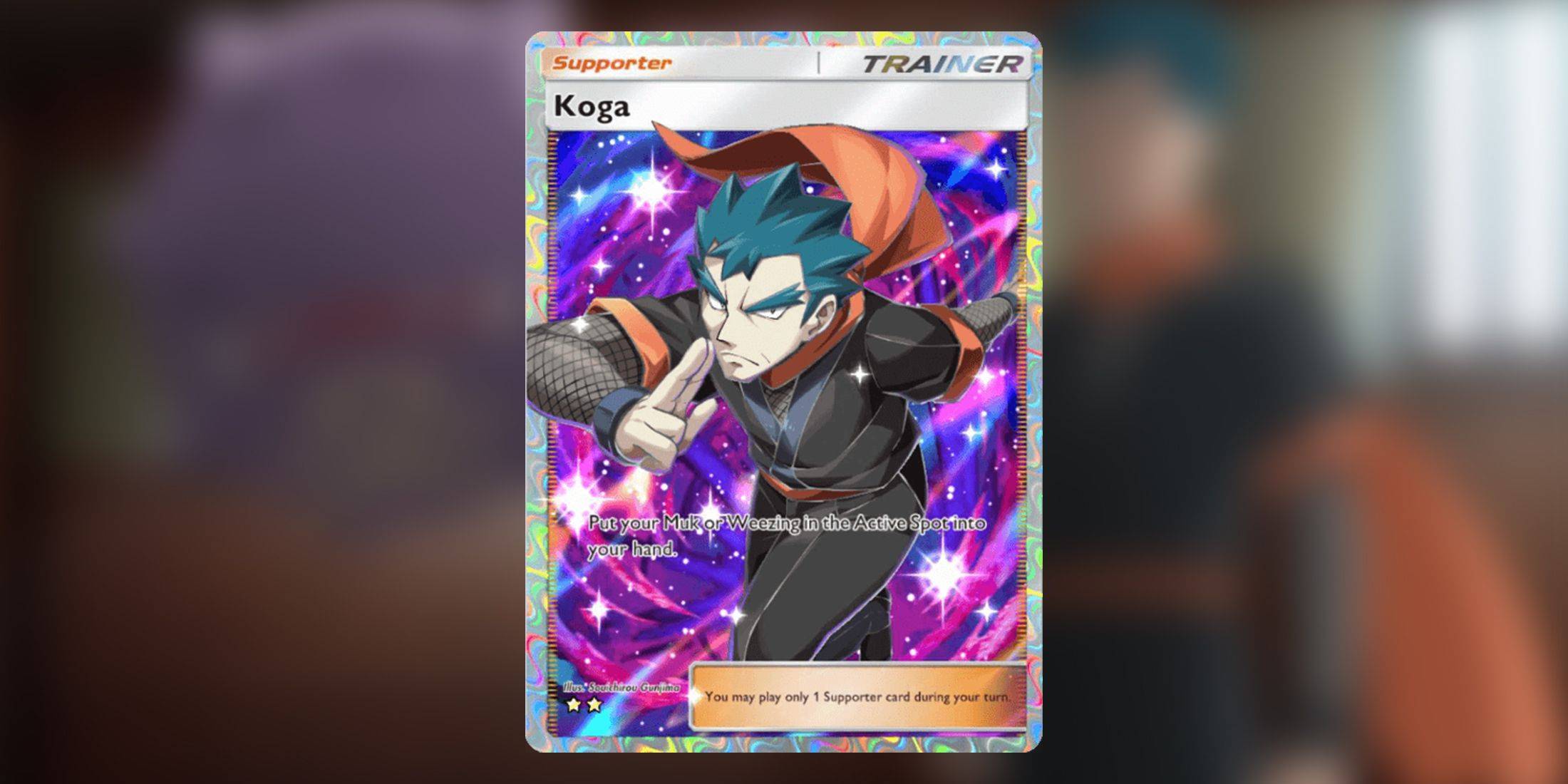Pokemon TCG Pocket: Understanding Paralysis and Cards with 'Paralyze' Ability
*Pokemon Pocket* brings the thrill of collecting and battling with Pokemon cards into the digital world, maintaining the essence of the physical trading card game. A key feature it replicates is the Paralyzed effect, which only a few Pokemon can inflict. While *Pokemon Pocket* introduces slight modifications, the fundamental mechanics of Paralysis remain consistent. Dive into our detailed guide to understand how this Special Condition works, how to recover from it, and strategies for building a deck around it.
What Is 'Paralyzed' in Pokemon TCG Pocket?
 Paralyzed is a Special Condition that immobilizes the opponent's Active Pokemon for one turn. This condition stops the affected Pokemon from attacking or retreating, leaving it stuck in the Active Spot without any action for one round. The Paralysis effect is automatically lifted after the opponent's next Checkup, just before your next turn begins.
Paralyzed is a Special Condition that immobilizes the opponent's Active Pokemon for one turn. This condition stops the affected Pokemon from attacking or retreating, leaving it stuck in the Active Spot without any action for one round. The Paralysis effect is automatically lifted after the opponent's next Checkup, just before your next turn begins.
Paralyzed vs. Asleep
Paralyze and Asleep conditions both prevent the opponent's Pokemon from attacking or retreating. The main difference is in their recovery methods. A Paralyzed Pokemon recovers automatically after the next Checkup, whereas an Asleep Pokemon needs a coin toss to wake up, with a heads result required. Additionally, the opponent can cure Asleep using strategies like Evolving the Active Pokemon or forcing it to retreat.
Paralyzed Rules in Pokemon Pocket vs. Physical PTCG
In the physical Pokemon Trading Card Game, Trainer Cards like Full Heal can remove the Paralyzed effect. While Pocket currently lacks similar counter-Paralysis cards, the core mechanics of the Special Condition are the same in both games: a Paralyzed Pokemon cannot attack or retreat for one turn.
Which Cards Have the Paralysis Ability?

- Pincurchin: Flip a coin. If heads, your opponent's Active Pokemon is now Paralyzed.
- Elektross: Flip a coin. If heads, your opponent's Active Pokemon is now Paralyzed.
- Articuno: Flip a coin. If heads, your opponent's Active Pokemon is now Paralyzed.
In the Genetic Apex expansion, only three cards can inflict the Paralyzed effect: Pincurchin, Elektross, and Articuno. All three depend on RNG, requiring a coin flip at the end of their attacks to determine if the opponent becomes Paralyzed. This reliance on chance is the archetype's main weakness, making it more of a battle gimmick than a reliable foundation for building a deck.
How Do You Recover from Paralyzed?
 There are four ways to cure Paralysis in Pokemon Pocket:
There are four ways to cure Paralysis in Pokemon Pocket:
- Wait for the next round: The Paralyzed effect will automatically go away at the start of your next turn.
- Evolve the Paralyzed Pokemon: Evolution is the quickest way to remove Paralysis.
- Retreat the Paralyzed Pokemon: If you have a card like Koga that forces a retreat, you can use it to remove Paralysis. Cards cannot have Special Conditions on the Bench, so retreats are an effective cure.
- Use a Support card: Currently, only Koga can counter Paralysis as a Support card, but this works only if your Paralyzed Pokemon is Weezing or Muk. Future expansions may introduce additional counter options.
What Is the Best Paralyze Deck?
 On its own, Paralyze is not a reliable archetype for building a deck. To make it more effective in Pokemon Pocket's META, you'll need to pair it with the Asleep condition. A solid lineup for this is Articuno & Frosmoth, which applies both Asleep and Paralysis effects through three attack lines: Articuno, Frosmoth, and Wigglytuff ex. Here's how to build this Paralyze-Asleep deck.
On its own, Paralyze is not a reliable archetype for building a deck. To make it more effective in Pokemon Pocket's META, you'll need to pair it with the Asleep condition. A solid lineup for this is Articuno & Frosmoth, which applies both Asleep and Paralysis effects through three attack lines: Articuno, Frosmoth, and Wigglytuff ex. Here's how to build this Paralyze-Asleep deck.
Paralyze Deck Details
| Card | Quantity |
|---|---|
| Wigglypuff ex | 2 |
| Jigglypuff | 2 |
| Snom | 2 |
| Frosmoth | 2 |
| Articuno | 2 |
| Misty | 2 |
| Sabrina | 2 |
| X Speed | 2 |
| Professor's Research | 2 |
| Poke Ball | 2 |
-
 Jan 27,25Roblox: Bike Obby Codes (January 2025) Bike Obby: Unlock Awesome Rewards with These Roblox Codes! Bike Obby, the Roblox cycling obstacle course, lets you earn in-game currency to upgrade your bike, buy boosters, and customize your ride. Mastering the various tracks requires a top-tier bike, and thankfully, these Bike Obby codes deliver
Jan 27,25Roblox: Bike Obby Codes (January 2025) Bike Obby: Unlock Awesome Rewards with These Roblox Codes! Bike Obby, the Roblox cycling obstacle course, lets you earn in-game currency to upgrade your bike, buy boosters, and customize your ride. Mastering the various tracks requires a top-tier bike, and thankfully, these Bike Obby codes deliver -
 Feb 20,25Where to Preorder the Samsung Galaxy S25 and S25 Ultra Smartphones Samsung's Galaxy S25 Series: A Deep Dive into the 2025 Lineup Samsung unveiled its highly anticipated Galaxy S25 series at this year's Unpacked event. The lineup features three models: the Galaxy S25, S25+, and S25 Ultra. Preorders are open now, with shipping commencing February 7th. Samsung's web
Feb 20,25Where to Preorder the Samsung Galaxy S25 and S25 Ultra Smartphones Samsung's Galaxy S25 Series: A Deep Dive into the 2025 Lineup Samsung unveiled its highly anticipated Galaxy S25 series at this year's Unpacked event. The lineup features three models: the Galaxy S25, S25+, and S25 Ultra. Preorders are open now, with shipping commencing February 7th. Samsung's web -
 Jul 02,22Isophyne Debuts as Original Character in Marvel Contest of Champions Kabam introduces a brand-new original character to Marvel Contest of Champions: Isophyne. This unique champion, a fresh creation from Kabam's developers, boasts a striking design reminiscent of the film Avatar, incorporating copper-toned metallic accents. Isophyne's Role in the Contest Isophyne ent
Jul 02,22Isophyne Debuts as Original Character in Marvel Contest of Champions Kabam introduces a brand-new original character to Marvel Contest of Champions: Isophyne. This unique champion, a fresh creation from Kabam's developers, boasts a striking design reminiscent of the film Avatar, incorporating copper-toned metallic accents. Isophyne's Role in the Contest Isophyne ent -
 Jan 11,25Jujutsu Kaisen Phantom Parade: Tier List Revealed This Jujutsu Kaisen Phantom Parade tier list helps free-to-play players prioritize character acquisition. Note that this ranking is subject to change with game updates. Tier List: Tier Characters S Satoru Gojo (The Strongest), Nobara Kugisaki (Girl of Steel), Yuta Okkotsu (Lend Me Your Stren
Jan 11,25Jujutsu Kaisen Phantom Parade: Tier List Revealed This Jujutsu Kaisen Phantom Parade tier list helps free-to-play players prioritize character acquisition. Note that this ranking is subject to change with game updates. Tier List: Tier Characters S Satoru Gojo (The Strongest), Nobara Kugisaki (Girl of Steel), Yuta Okkotsu (Lend Me Your Stren
